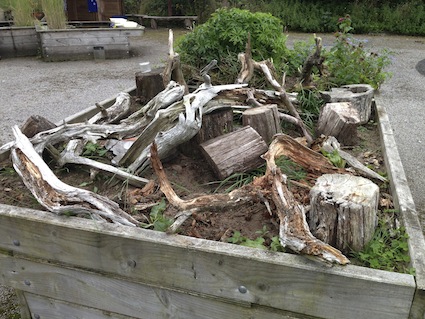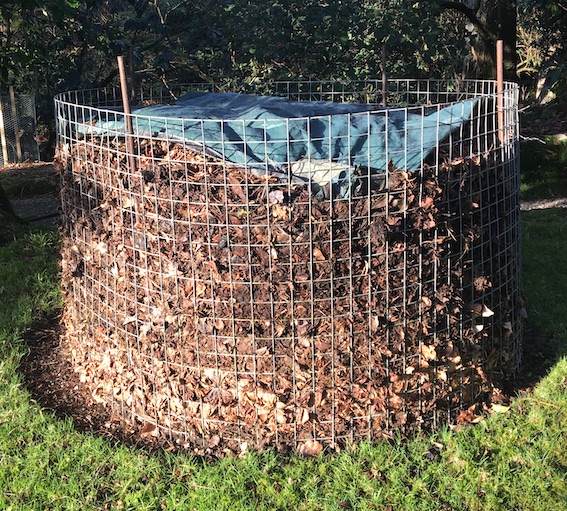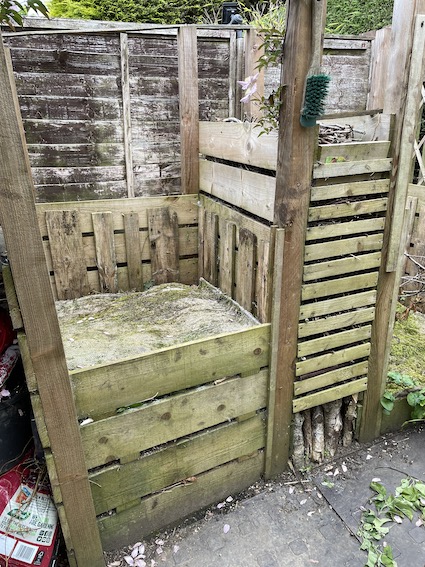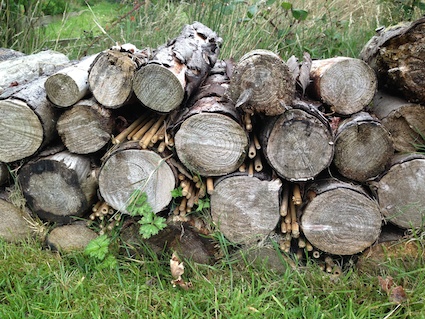8 Easy Minibeast Habitats Young Children Can Make | Creative STAR Learning
[ad_1]

When kids go bug hunting, many typically want to produce households for minibeasts. Any measures which strengthen the biodiversity of an outdoor space enable. Generating a array of habitats will aid catch the attention of far more creatures into the grounds. In the photo previously mentioned, this minibeast habitat has been made on a raised system, building it wheelchair obtainable.
Down below are some really straightforward suggestions for courses who are unsure about where to start.
1. Build a leaf pile.
If you have a silent corner wherever the wind does not get to, then an undisturbed pile of leaves can develop into a house for harvestmen, beetles, mites and other creatures. Ideally, you will eventually have layers that mimic a woodland floor. The leading layer is the litter horizon. The leaves must be recognisable. Down below this is a next layer exactly where the leaves begin to split down. This is acknowledged as the fermenting layer. The leaves will be a lot more compacted and quite a few will be beginning to rot. The 3rd layer, or horizon is the humus. This is dark brown or black as the leaves have totally rotted down. Gardeners generally generate leaf mould by piling leaves into a mound that is surrounded by chicken wire to hold the leaves in. This is a valuable kind of compost after it is thoroughly damaged down. This can get 2-3 a long time.

2. Produce a rock or stone pile
Rock or stone piles can be made in distinct destinations to bring in a wide variety of creatures. If doable, dig a shallow pit and set some big slabs about it so that shelter is readily available for amphibians this sort of as toads. A variety of dimensions of rocks can be useful. Bear in thoughts, children’s curiosity will imply that they will want to lift up stones and have a glimpse. So position even bigger ones in the centre of the pile out of children’s reach. Depart smaller sized types all around the outside that small children can raise and take a look at. Minibeasts this sort of as some sorts of spiders like a drier home so search for stones bigger up and cracks in partitions.
3. Experiment with brash
Smaller branches, cones and other fallen offerings from indigenous trees will also provide handy properties and habitats for creatures as they rot down. I used to maintain a compact pile of this kind of product near my compost bin which could not be composted but present an additional property for minibeasts. In the photo beneath you can see it to the ideal of the compost bin. There is a 2nd compost bin and this brashing region connects the two.

4. Lay out carpet tiles
One particular or two carpet tile laid over moist soil can be really appealing for some soil dwellers who like the darkish and damp. It is also quick for little ones to lift up and appear. In the above photograph, the carpet tile laid on leading of the compost heap. This retains it great and dark for the creatures – under are worms, slaters, slugs and considerably additional.
5. Allow a patch of your taking part in field mature long grass
Extended grass offers a safer dwelling for insects and invertebrates. Wildflowers are offered a opportunity to grow. Just before prolonged, really a several creatures will go in. Just recall to liaise with your regional authority and the organization which does the grass reducing to make sure that the grass isn’t inadvertently minimize.
6. Go away nettles to expand
Nettles are residences for selected styles of caterpillars. In a sunny site, they catch the attention of insects. They are also fantastic crops to increase to compost bins and make nettle soup with.
7. Increase a wildflower mini meadow
There are lots of native seed mixes available from garden centres and wildlife organisations. A elevated bed or patch of bare ground in the open will immediately generate a heap of flowers above the summertime months. Plantlife is a valuable organisation for simple guidance especially if you want to build a major meadow. Bear in intellect, that appropriate wildflower meadows need certain slicing regimes so take into consideration how you will take care of this.
8. Log piles. The much more the merrier. This weblog post presents you plenty of hints and strategies.
Don’t fail to remember to motivate kids to label their minibeast habitats so that many others realise they are intentional characteristics. Remember to re-check out and delight in the discovery of new creatures relocating in!

Under are some thoughts which consider a minimal additional work but worthwhile doing…
Minibeast accommodations and other residences. This website submit provides details about the huge selection of prospects that exist. However, like ourselves, minibeasts want their individual normal houses relatively than accommodations most of the time.
Compost bins are superb features that appeal to slugs, worms and other creatures. Observe the suggestions in this put up for creating a single.
Wormeries are extremely useful. This website post gives you some hints how to get likely. As well as just one which breakdown food items, it is also quick to generate one in a plastic bottle which shows how worms blend up the soil. These can be stored inside.
Ponds are great for attracting aquatic minibeasts. Glance at this web site put up for information and recommendations.
Plant an orchard. Fruit trees and shrubs catch the attention of traveling bugs that pollinate the flowers that become the fruit we really like to take in. Heritage versions are significantly worthwhile to protect the diversity of fruit.
Plant native trees. Indigenous trees have better biodiversity value. Trees have lots of seeds which get scattered just about every 12 months. Young children can have entertaining accumulating tree seeds that have fallen: acorns, hazel nuts, Scot’s pine cones and holly berries are just a number of examples that young children can obtain and check out to improve – be warned some are much easier than other people. The Woodland Trust function a cost-free trees for faculties plan much too.
Naturally making your grounds a lot more wildlife welcoming is practical – this wildlife backyard garden was produced on a shoestring spending plan. The Wee Eco-friendly Fingers web site write-up has tons of ideas for indigenous and wildlife pleasant plants.
Don’t forget – any functions or habitats your class makes will need to be cared for and maintained. So be certain you have the time and inclination to do this. Seem for back links to the curriculum so that you can justify the caring and routines as component of your classwork rather than as an added. No-one has time for extra work.
This write-up was originally posted in April 2016.
Linked
[ad_2]
Resource website link
